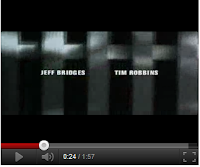The 4 types of structure used in film openings are Discrete, Traditional, Stylised Editing and Credits over a blank screen. Below are quick definitions and examples:
A Discrete film opening is when there are images shown that may not have anything to do with the film but are placed together, a lot of editing is used to create this. This is supposed to make it hard for the audience to understand what the story is basically about. An example is of this would be from Arlington Road, shown below:
A traditional film opening is when the audience is slightly aware of what the film may be about. An image may be used to give a hint to the audience of what the film involves. For e.g. in Panic Room we see images of New York and a vary of other buildings which gives us an hint that the film may be based in this location. Below is an screenshot of this:
Credits over a blank screen is when credits in a film opening are shown basically on a blank screen. This is to ensure that the audience does not have a clue on what the storyline is about. However, the credits may appear in interesting ways and the sound used may just be to set the tone. An example of this would be from the opening of Dead Calm:
Stylised editing is based on editing. It is where many editing shots have been taken of something specific and in different angles and maybe different shot types. Below is an excellent example of this in Mezrine, where a woman that is being introduced is shot in different angles, this enables the audience to visualise an point of view shot and see what they are looking at.




No comments:
Post a Comment